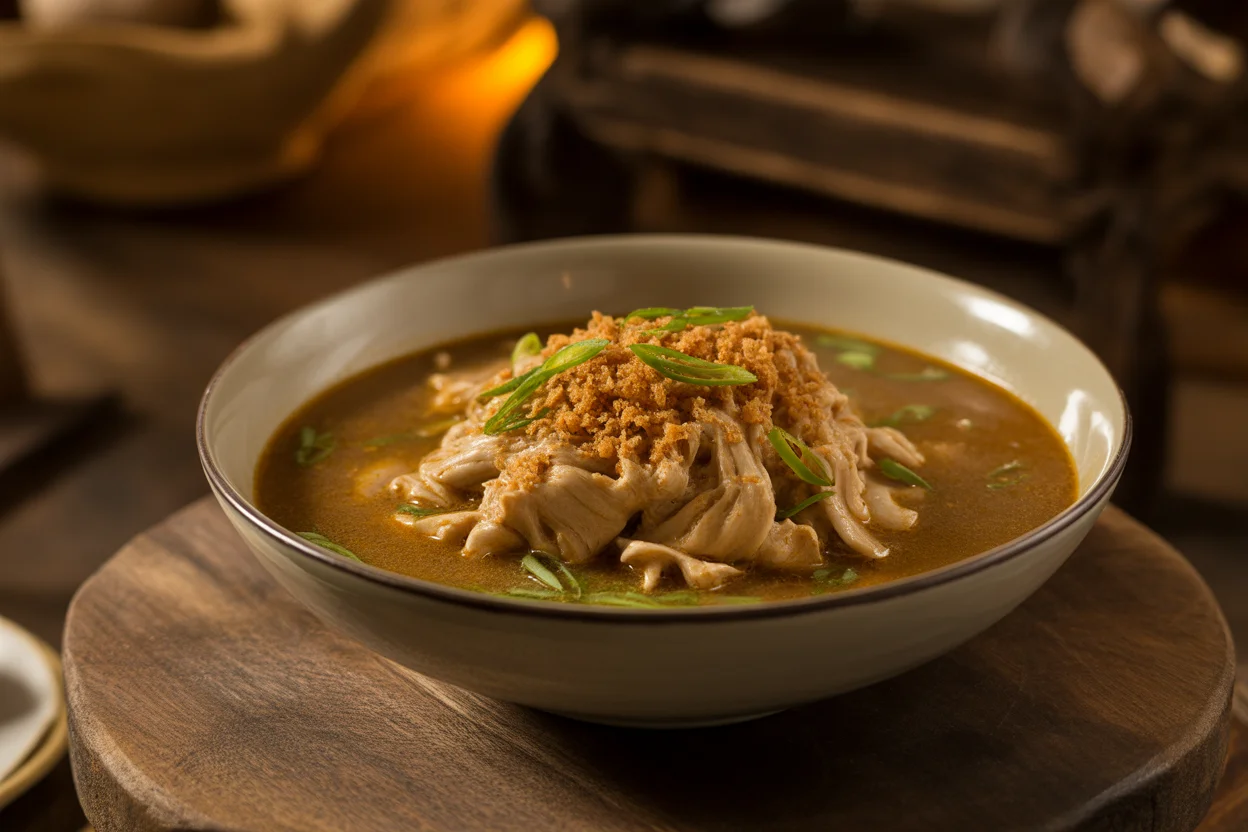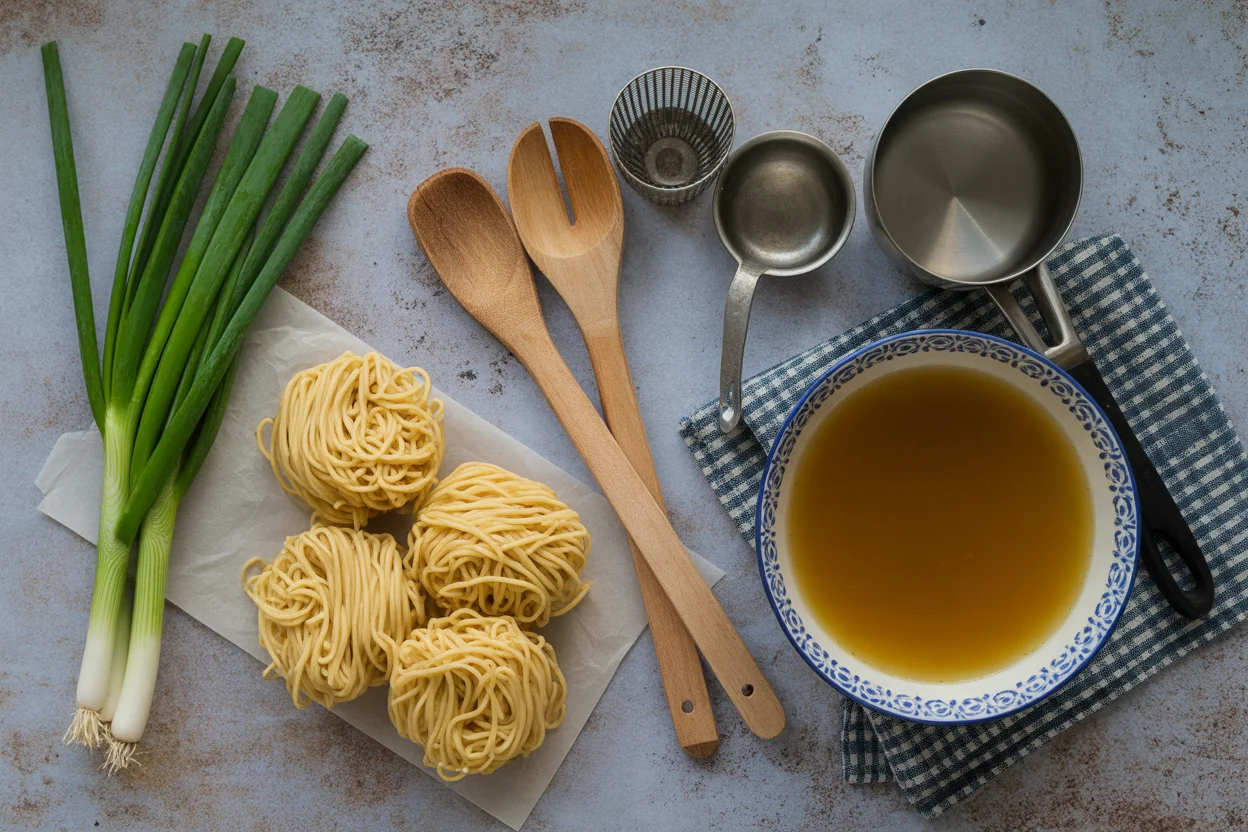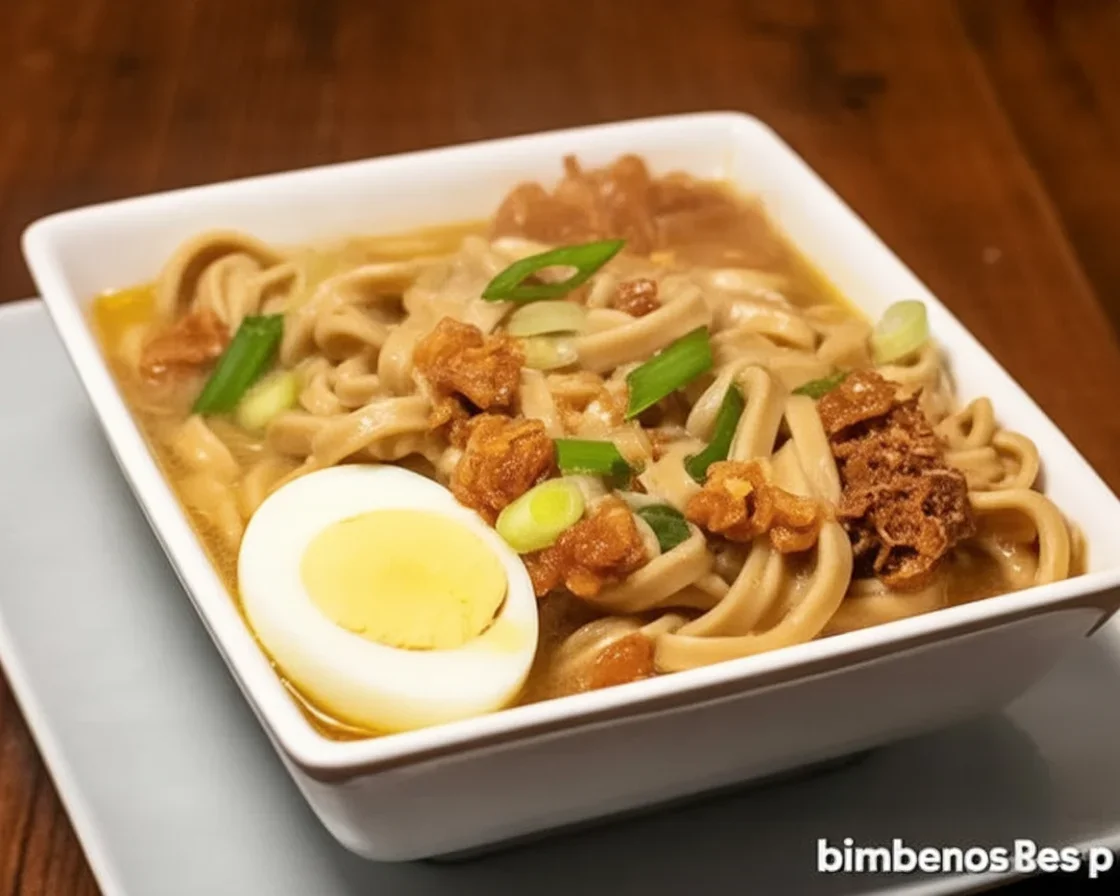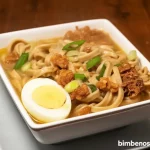Filipino lomi Batangas cravings hit hardest when it rains. You ever just look outside and think, Man, I need a huge bowl of something hot, thick, and loaded? I do. And if you’ve got tastebuds that scream for comfort food like mine, Batangas lomi pretty much delivers that five-star restaurant feeling—right from a noisy roadside carinderia. If you’ve got curious kids around or want a break from that same old sinigang, trust me, this is a solid move. I learned it from a tita in Batangas (she could outcook Gordon Ramsay any day). Before we jump in, if you like to explore or need other flavors for your rotation, try these kid-friendly Filipino favorites or, if you want to get classic, taste bistek Tagalog. You can never have too many comfort dishes, right?

What is Batangas lomi?
Okay, so Batangas lomi isn’t just any noodle soup. It’s a thicc soup—like, thick with double c’s. Picture fat, chewy egg noodles swimming in a golden, almost custardy broth. It’s sticky and glossy (almost like melted cheese, but nope, it’s cornstarch magic). There’s a reason lomi gets called a Filipino classic in Batangas. It fills you up after a long day. You’ve got overflowing toppings—pork bits, liver (don’t knock it), kikiam, egg, sometimes even chicharrón. The real deal throws everything on top. When you eat lomi, forget small talk. It’s eating time.
Most food stalls in Batangas swear they have the “original” Batangas lomi, but honestly, everyone puts their own spin on it. My cousin swears the secret’s in the broth. I say, it’s how generous you are with toppings.
I mean, have you ever seen a noodle bowl where you’re squinting to find the noodles? That’s not Batangas lomi. Here, you practically need a shovel, not a soup spoon.
“My whole family swears by Batangas lomi. We make it every Sunday and somehow, it just tastes like home—messy, warm, a bit too filling. But that’s why we love it.” – Anna B., family cook and Batangas native

Preparing noodles
So, those noodles, right? If you ever find yourself standing in front of a pile of thick yellow egg noodles at the wet market, grab them. That’s your lomi base. If you can only get dry ones, don’t panic—just soak ’em a little longer.
You know, every time I prep noodles, I get a little impatient (hungry mood). Quick tip: Rinse extra starch off first before dumping them into water. It’ll keep your soup from gumming up. Also, cook them just till they’re bouncy but not falling apart. I’ve wrecked a few bats by overboiling… let’s not talk about that.
A weird but handy trick? Toss a dash of oil in the water. Helps everything stay loose. Real Batangas locals will tell you, “don’t skip the noodles,” because, well… it’s called Batangas lomi. Go big with the noodles or go home.

Cooking broth
Now for the magic potion. The broth’s gotta be rich but not too salty. I like starting with pork bones, but if you’re in a rush, chicken bouillon works (don’t tell my tita). Add lots of garlic and onions for that savory base.
Once your broth bubbles, it’s time for the secret stuff: cornstarch. Some do potato starch. I’m basic. Dissolve it in water before adding so you don’t get lumps (learned the hard way, nobody likes dumpling broth). Stir slow, watch it thicken to gravy.
Then, flavor it up—soy sauce, pepper, maybe a dash of fish sauce if you like some funk. But keep tasting! Not too wild, just a cozy, slurpable blend. Some lomi houses drop in a raw egg at the end. Stir it in quick and it vanishes, leaving the broth silkier.
Adding toppings
Honestly, this is where you can get wild or stay simple. Classic Batangas lomi goes all-out. Chopped lechon kawali? Add it. Slices of pork liver? Do it if you dare. I even throw in kikiam and fish balls for fun—extra bulk and flavor.
Here’s what usually ends up on mine:
- Shredded chicken or pork
- Fried pork skin (crunchy, salty, just do it!)
- Chopped spring onions for pop and color
- Sometimes a boiled egg or two, halved, peeking out like buried treasure
I’ve seen folks top it with hotdogs or squid balls. No shame in creativity, I say. The rule? No empty surface.
Serving hot
Don’t even try serving Batangas lomi cold. It’s practically a sin! I bring mine to the table still bubbling, hot enough to fog up your glasses (if you wear them).
Big shallow bowls work best. Each bowl gets a squirt of calamansi juice on top—you want a little zing to cut through the rich soup. And don’t forget the soy sauce, chili oil, or even spiced vinegar on the side for dunking every spoonful. This isn’t the time for pretty plating. Pile it up!
Serving suggestions:
- Top with lots of crunchy garlic bits for extra kick
- Serve with a side of soft pan de sal or puto (soaked bread? trust me, it’s great)
- Hand out extra calamansi slices… trust me, people will ask
- Always keep extra napkins—you will definitely need them

Best occasions
When’s the perfect time for Batangas lomi? Well—rainy afternoons are classic, but honestly, anytime you need a reeeally heavy meal that won’t quit, it fits. Birthday parties, big reunions, nothing says “eat all you want” like a steaming lomi cauldron. At our house, it’s the go-to after a long roadtrip or when everybody just craves something heartier than goto.
It’s even kid-approved (I bribe mine with extra toppings). When the weather drops or friends pop by with not much notice, I pull out my lomi game. Please, don’t forget to make enough—somehow, somebody always wants seconds.
Regional popularity
Around Batangas, every town has their own favorite lomi spot. Some serve it with almost a stew-like broth, others go mega-glossy, super-thick. In Lipa, they swear adding lechon bits on top is the secret. You can even find roadside stalls with folks lined up, rain or shine, just to grab a bowl before heading to work (faithful crowd, I tell you).
People drive in from Manila, brave the traffic, just for that giant, overflowing bowl. The dish puts Batangas on the food map—the kind you remember, crave, and try to copy at home. It’s not fancy, but it’s 100% comforting, every single time.
Wrapping up
Real talk, if you’re still hungry for more after one bowl, you’re probably not human—Batangas lomi fills you up. It’s Filipino comfort food at its heaviest/homiest/best. Try a recipe from this Pancit Lomi how-to or check out the quirky reviews at Lomi Batangas – Eat at your own pace and risk! to get even more lomi-obsessed. Wanna DIY at home? Run through this Lomi Recipe for more lomi inspiration. Hope you give Batangas lomi a spot at your table—trust me, your tummy (and probably your mood) will thank you.
Batangas Lomi
Ingredients
For the Noodles
- 400 g thick yellow egg noodles Can substitute with dry noodles, soak longer if using dry.
For the Broth
- 1 kg pork bones Can use chicken bouillon for a quicker option.
- 5 cloves garlic Minced.
- 1 medium onion Chopped.
- 2 tablespoons soy sauce
- 1 teaspoon cornstarch Dissolved in water to avoid lumps.
- 1 teaspoon pepper
- 1 tablespoon fish sauce Optional for extra flavor.
- 2 large eggs Optional, to stir in at the end.
For the Toppings
- 200 g shredded chicken or pork Cooked.
- 100 g fried pork skin For added crunch.
- 2 tablespoons chopped spring onions For garnish.
- 2 pieces boiled egg Halved.
Instructions
Preparation
- If using fresh egg noodles, rinse off excess starch, then cook them until bouncy but not falling apart. Toss a dash of oil in the water to keep them loose.
Cooking Broth
- In a large pot, add pork bones and cover with water. Bring to a boil, then add garlic and onion for flavor.
- Once bubbling, add dissolved cornstarch slowly while stirring to thicken the broth.
- Season with soy sauce, pepper, and fish sauce if using. Keep tasting until the flavor is cozy and slurpable.
- If desired, stir in a raw egg at the end for a silkier broth.
Assembling and Serving
- Serve the thick noodles in shallow bowls and ladle hot broth over them.
- Top generously with shredded meat, fried pork skin, spring onions, and halved boiled eggs.
- Serve hot with calamansi juice, soy sauce, chili oil, and spiced vinegar on the side.

